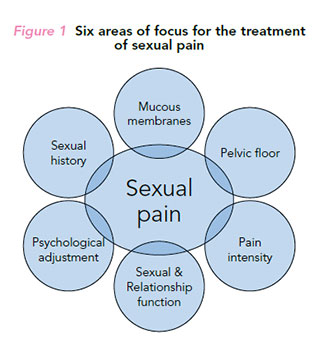
Sexual pain disorders can significantly impact the quality of life and intimate relationships for both men and women. Conditions such as dyspareunia and pelvic pain can lead to avoidance of sexual activity, feelings of anxiety, and strained relationships. Understanding these disorders, their potential causes, and effective coping strategies can empower individuals to seek help and enhance their sexual health. In this guide, we will explore various sexual pain disorders, their management, and tips for overcoming these challenges.
Understanding Sexual Pain Disorders
Sexual pain disorders are characterized by persistent or recurrent pain during sexual activity. They can affect individuals of any gender and may manifest in different ways. The two primary types of sexual pain disorders include:
1. Dyspareunia
Dyspareunia refers to pain during intercourse. It can occur in both men and women and may be associated with various underlying factors.
Symptoms:
- Pain during vaginal or anal penetration
- Discomfort before, during, or after sexual activity
2. Vaginismus
While already discussed in previous blogs, it is important to note that vaginismus can also lead to pain during intercourse due to involuntary muscle contractions.
Symptoms:
- Involuntary tightening of vaginal muscles
- Anxiety or fear regarding penetration
3. Penile Pain Disorders
Men may also experience pain during sexual activity due to conditions affecting the penis, such as:
- Peyronie’s Disease: A condition characterized by the development of fibrous scar tissue inside the penis, leading to painful erections and curvature.
- Balanitis: Inflammation of the glans (tip) of the penis, often resulting in pain or discomfort during intercourse.
Potential Causes of Sexual Pain Disorders
Physical Causes
- Infections: Conditions such as yeast infections, urinary tract infections (UTIs), and sexually transmitted infections (STIs) can lead to pain during intercourse.
- Hormonal Changes: For women, hormonal fluctuations during menstruation, pregnancy, or menopause can result in vaginal dryness and discomfort.
- Medical Conditions: Chronic conditions such as endometriosis, fibroids, or pelvic inflammatory disease can contribute to pelvic pain and sexual discomfort.
- Anatomical Abnormalities: Issues such as a tight hymen, vaginismus, or penile abnormalities may cause pain during sexual activity.
Psychological Causes
- Anxiety and Stress: Emotional factors, including anxiety about performance, past trauma, or relationship issues, can contribute to physical pain during sex.
- Negative Body Image: Feelings of self-consciousness or insecurity about one’s body can lead to tension and discomfort during sexual encounters.
Seeking Professional Help
If you or your partner experience persistent sexual pain, it is essential to seek professional help. A healthcare provider can evaluate the underlying causes and recommend appropriate treatment options. Common professionals to consult include:
- Gynecologists: For women experiencing sexual pain, a gynecologist can assess any anatomical or hormonal issues.
- Urologists: Men experiencing penile pain may benefit from consulting a urologist, who specializes in male reproductive health.
- Sex Therapists: A sex therapist can provide support for psychological aspects of sexual pain, helping individuals and couples navigate emotional challenges.
Coping Strategies for Managing Sexual Pain
1. Open Communication
Having open and honest conversations with your partner about sexual pain is vital. Discussing discomfort and exploring alternative ways to maintain intimacy can reduce anxiety and create a supportive environment. Establishing a safe space for communication can help both partners feel more connected and understanding.
2. Gradual Exposure
For individuals experiencing pain during penetration, gradual exposure techniques may help desensitize the area and reduce discomfort. This can involve:
- Using Dilators: Vaginal dilators can be used to gradually introduce gentle pressure and stretching, helping to ease tension and discomfort over time.
- Gentle Touch: Exploring non-penetrative activities, such as kissing, cuddling, or manual stimulation, can enhance intimacy without the pressure of penetration.
3. Lubrication
Using a high-quality lubricant can help alleviate discomfort caused by friction during intercourse. This is especially important for women experiencing vaginal dryness. Discussing options with a healthcare provider can help identify suitable products.
4. Relaxation Techniques
Incorporating relaxation techniques, such as deep breathing, meditation, or yoga, can help reduce anxiety and improve overall well-being. These practices can promote relaxation of the pelvic floor muscles, making sexual activity more comfortable.
5. Seeking Support Groups
Joining support groups or forums where individuals share their experiences with sexual pain disorders can provide comfort and encouragement. Hearing from others who have faced similar challenges can foster a sense of community and reduce feelings of isolation.
Conclusion
Sexual pain disorders can be challenging to navigate, but with the right support and strategies, individuals can reclaim their sexual health and enhance their intimate relationships. Understanding the types of pain disorders, potential causes, and coping mechanisms is essential for those experiencing discomfort during sexual activity. Remember, seeking help is a crucial step toward healing, and you don’t have to face these challenges alone. By opening up the conversation, exploring treatment options, and implementing coping strategies, individuals can overcome sexual pain disorders and experience fulfilling intimate relationships.

